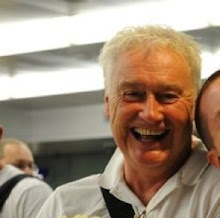
Meera Syal as SHIRLEY VALENTINE
Menier Chocolate Factory
30 March 2009
There can be scarcely a Chardonnay-drinking woman on the planet who failed to be inspired by the story of Shirley Valentine, a Liverpool housewife whose confidence and personality were so submerged by her marriage until she rediscovers them on holiday in the Greek Islands, fulfilling an ambition to ‘drink a glass of wine in the country where the grape is grown’.
Struggling manfully to contain her own livelier personality beneath Shirley’s housecoat, Meera Syal is the latest in a long line of actresses to spend the first act cutting chips for Joe’s tea. Except this is the first of the production’s failures since it seems an utter waste not to give Syal, one of the most brilliant of Asian actresses, an opportunity to introduce an Indian element to the cowed housewife’s character.
Instead, she gives us a bumpy tour of the M6 as her accent wanders from summer stock Scouse to her native Birmingham and back. If she’d been knocking up onion bhajjis whilst worrying what her husband would say when he came home instead of egg and chips, this could have been a springboard to illuminate domestic oppression in a far more contemporary and challenging way, and allowed her to develop a third dimension to her Shirley which is lacking in some of the scenes.
This version is directed by Glen Walford, who first commissioned Willy Russell to write Shirley Valentine when she was artistic director of the Liverpool Everyman in 1986 so you’d think she knew her onions. Or chips. But she may be resting on laurels as she directed local comedienne Pauline Daniels in a similarly boxy production there in 2009.
To say that Syal is much better in the second act, when Shirley’s soliloquy takes place on a sunny Greek beach and her personality is also warmer is to suggest she’s not quite ‘got it’ in the first half. This is perhaps slightly unfair since there’s a lot to enjoy in her performance, but there were moments when you might notice that Syal’s experience is grounded in TV, film and comedy and that (thanks Wikipedia) this is only her fourth ever stage appearance, particularly when she’s doing Shirley ‘doing’ the voices of the other characters with rather more technique than the average Merseyside housewife.





